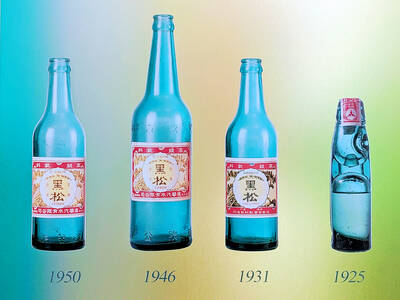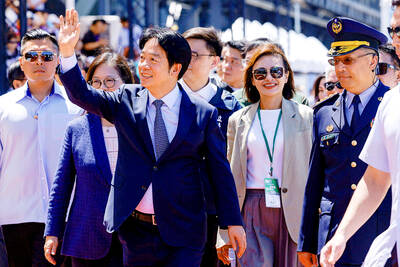A young woman naps on a pedestal-like bed, unperturbed by Soviet-era propaganda music and sensual Latin melodies playing a few meters away.
The setting is the New Museum in New York and the sleeping beauty is a living sculpture by Chinese artist Chu Yun. For the next three months a rotating group of women fueled with sleeping pills will recreate Chu’s island of serenity — snapping photos is allowed — as part of the museum’s lively first triennial, The Generational: Younger Than Jesus.
Guilt-free voyeurism and exhibitionism are common threads among the works by 50 international artists born after 1976 (hence the title reference to Jesus, crucified at 33). No surprise here. This crowd grew up in an era where it’s perfectly acceptable to share the most intimate or mundane details of your life on the Internet.
There’s not much rebellion in Younger Than Jesus. This cyber-savvy generation instead remixes vast quantities of visual information from all kinds of sources to construct its own reality, all to spirited effect.
Armenian artist Tigran Khachatryan’s aggressive, fast-paced video weaves grainy, black-and-white footage from Soviet avant-garde films with shots of teenage skinheads fighting, giving Nazi salutes and jumping away from speeding trains.
China’s Liu Chuang approached strangers on the street, offering to buy everything on them for US$500. It’s unclear how the handoffs took place, but at least three people said yes. Their personal items — from underwear and socks to makeup and credit cards — are neatly arranged on three platforms. For this group, anything can be displayed as art.
VIDEO DOMINATES
All mediums are represented, though video and photography dominate. More unusual experiments include Mark Essen’s video game, projected onto a wall that visitors can play with; Icaro Zorbar’s collage of three turntables surrounding a fourth one playing Latin music and Ruth Ewan’s jukebox with 1,200 protest songs.
Painting doesn’t seem to be popular among the 145 works on display.
One exception is Poland’s Jakub Julian Ziolkowski whose imaginative, painstaking canvases contain labyrinths but almost no empty space. The Great Battle Under the Table is a large maze of tiny warring soldiers, barbarians and dragons. The scene recalls Hieronymus Bosch; the layered compositional intricacy brings to mind a Persian rug.
THUMPING MUSIC
Many of the artists have an affinity for videos that either dwell on images of ultimate doom or move at time-warped speed while playing thumping music.
In his animated Panoptikon, Turkish artist Emre Huner’s post-apocalyptic scenes are a mix of science-fiction imagery with patterns from Turkish textiles and ceramics. French artist Cyprien Gaillard’s footage of gangs of fighting young men on the outskirts of St Petersburg, Russia, bring to mind Khachatryan’s manic youths.
Gaillard’s video is set to a fabulous dance soundtrack by the French musician Koudlam. Like the music, the actions of the men have a repetitive, meditative quality. The correspondence between the sound and images makes the piece engaging.
Philadelphia-based Ryan Trecartin’s hyperactive videos depict a world populated by hysterical characters with ambiguous genders. They speak gibberish at breakneck speed in digitally manipulated voices. Many sport blue teeth and garish makeup.
Trecartin has a huge following on YouTube. I got a headache 10 minutes into watching it. But that could be because I am two years older than Jesus.

The unexpected collapse of the recall campaigns is being viewed through many lenses, most of them skewed and self-absorbed. The international media unsurprisingly focuses on what they perceive as the message that Taiwanese voters were sending in the failure of the mass recall, especially to China, the US and to friendly Western nations. This made some sense prior to early last month. One of the main arguments used by recall campaigners for recalling Chinese Nationalist Party (KMT) lawmakers was that they were too pro-China, and by extension not to be trusted with defending the nation. Also by extension, that argument could be

Aug. 4 to Aug. 10 When Coca-Cola finally pushed its way into Taiwan’s market in 1968, it allegedly vowed to wipe out its major domestic rival Hey Song within five years. But Hey Song, which began as a manual operation in a family cow shed in 1925, had proven its resilience, surviving numerous setbacks — including the loss of autonomy and nearly all its assets due to the Japanese colonial government’s wartime economic policy. By the 1960s, Hey Song had risen to the top of Taiwan’s beverage industry. This success was driven not only by president Chang Wen-chi’s

Last week, on the heels of the recall election that turned out so badly for Taiwan, came the news that US President Donald Trump had blocked the transit of President William Lai (賴清德) through the US on his way to Latin America. A few days later the international media reported that in June a scheduled visit by Minister of National Defense Wellington Koo (顧立雄) for high level meetings was canceled by the US after China’s President Xi Jinping (習近平) asked Trump to curb US engagement with Taiwan during a June phone call. The cancellation of Lai’s transit was a gaudy

The centuries-old fiery Chinese spirit baijiu (白酒), long associated with business dinners, is being reshaped to appeal to younger generations as its makers adapt to changing times. Mostly distilled from sorghum, the clear but pungent liquor contains as much as 60 percent alcohol. It’s the usual choice for toasts of gan bei (乾杯), the Chinese expression for bottoms up, and raucous drinking games. “If you like to drink spirits and you’ve never had baijiu, it’s kind of like eating noodles but you’ve never had spaghetti,” said Jim Boyce, a Canadian writer and wine expert who founded World Baijiu Day a decade